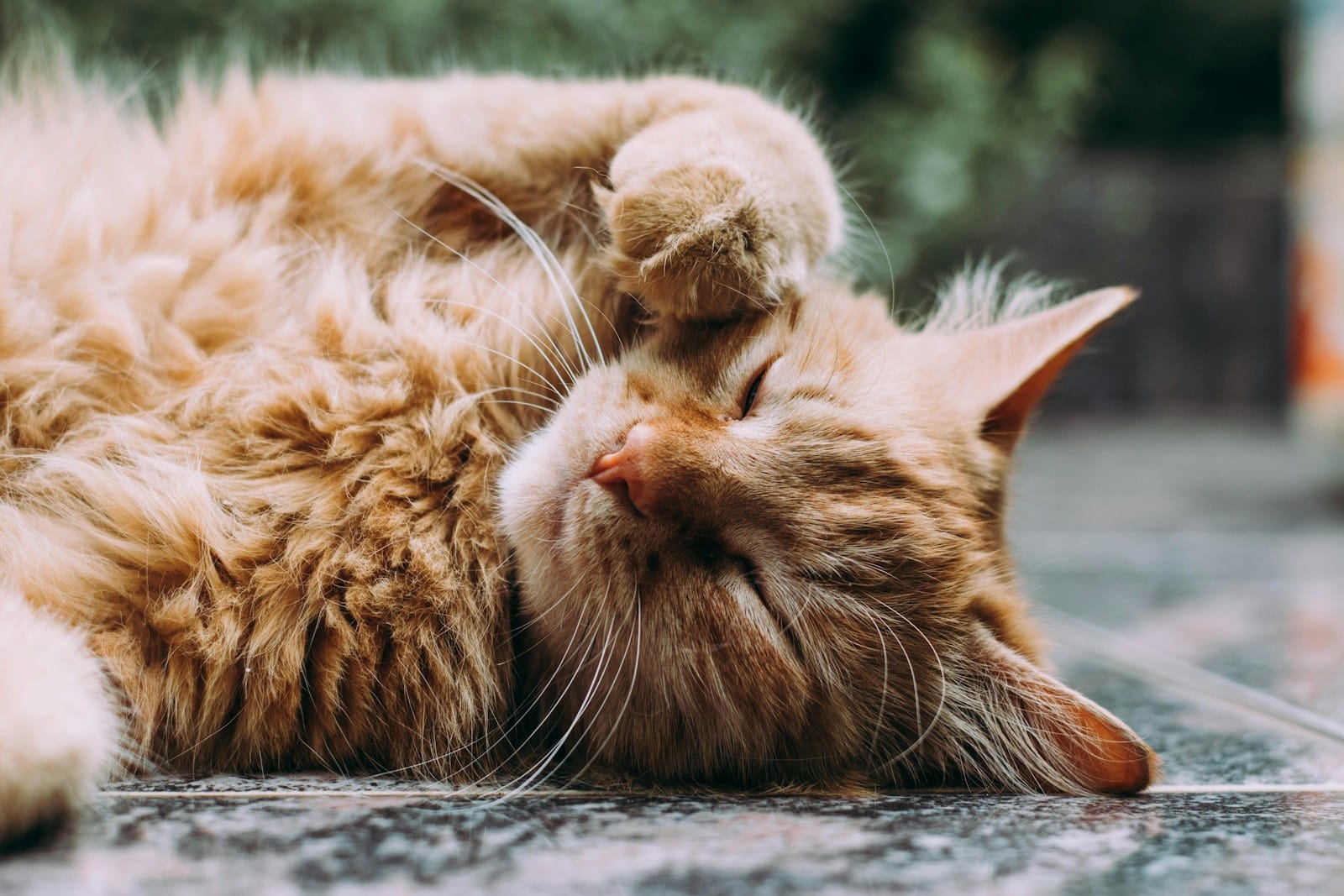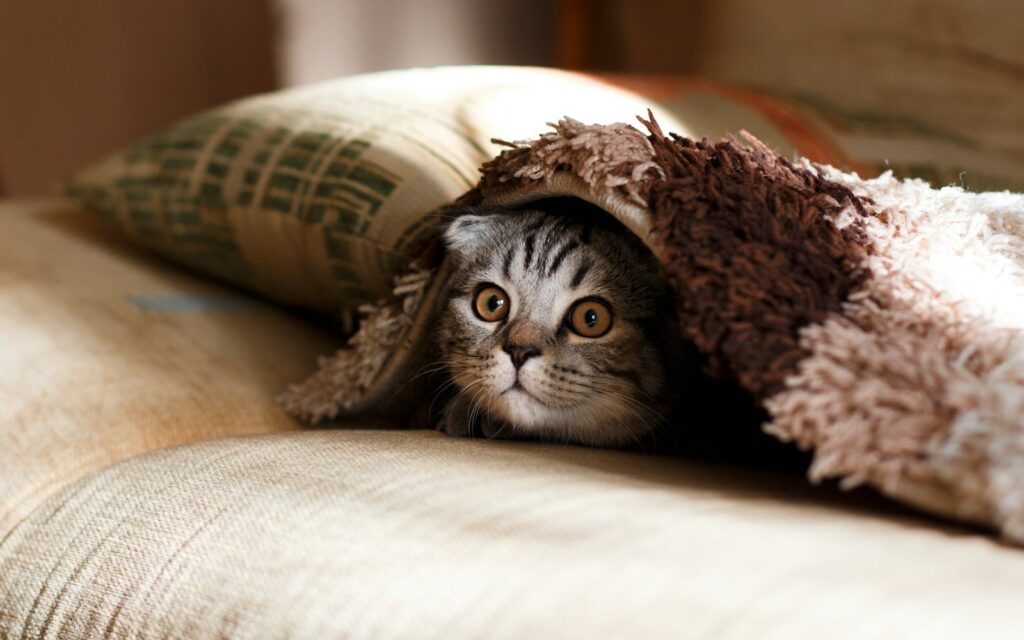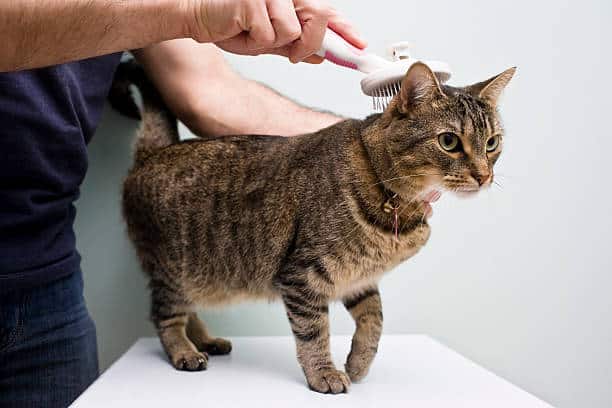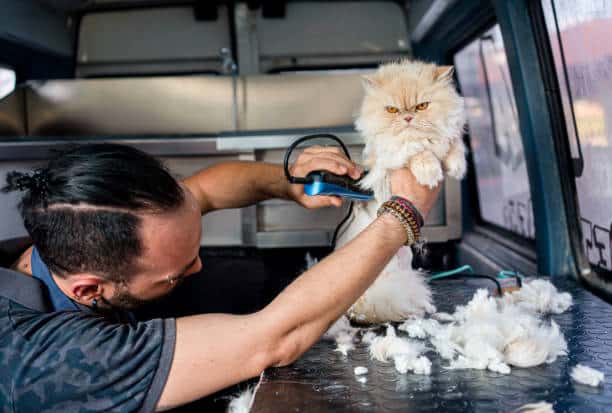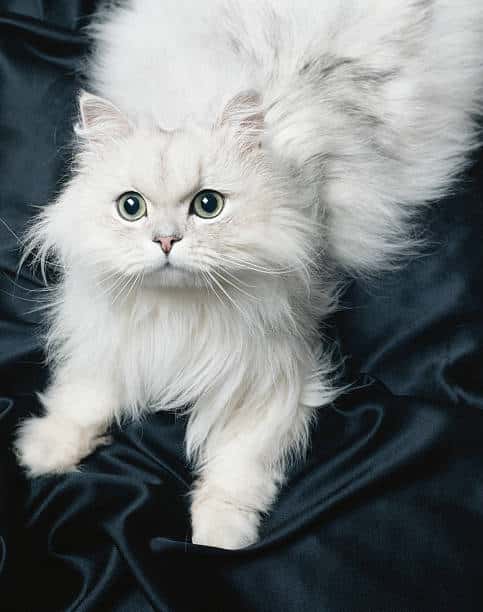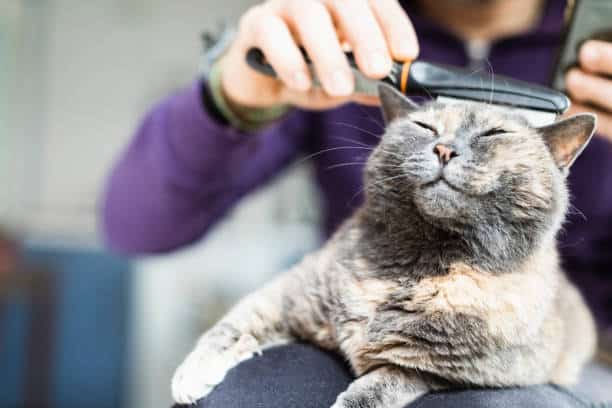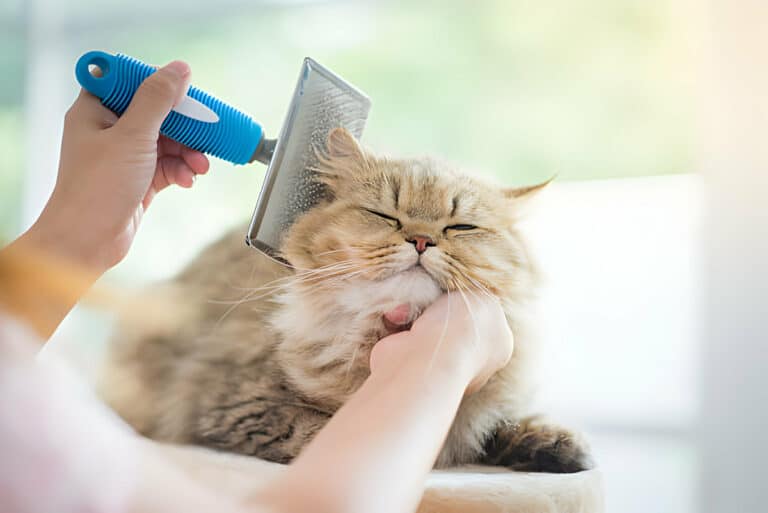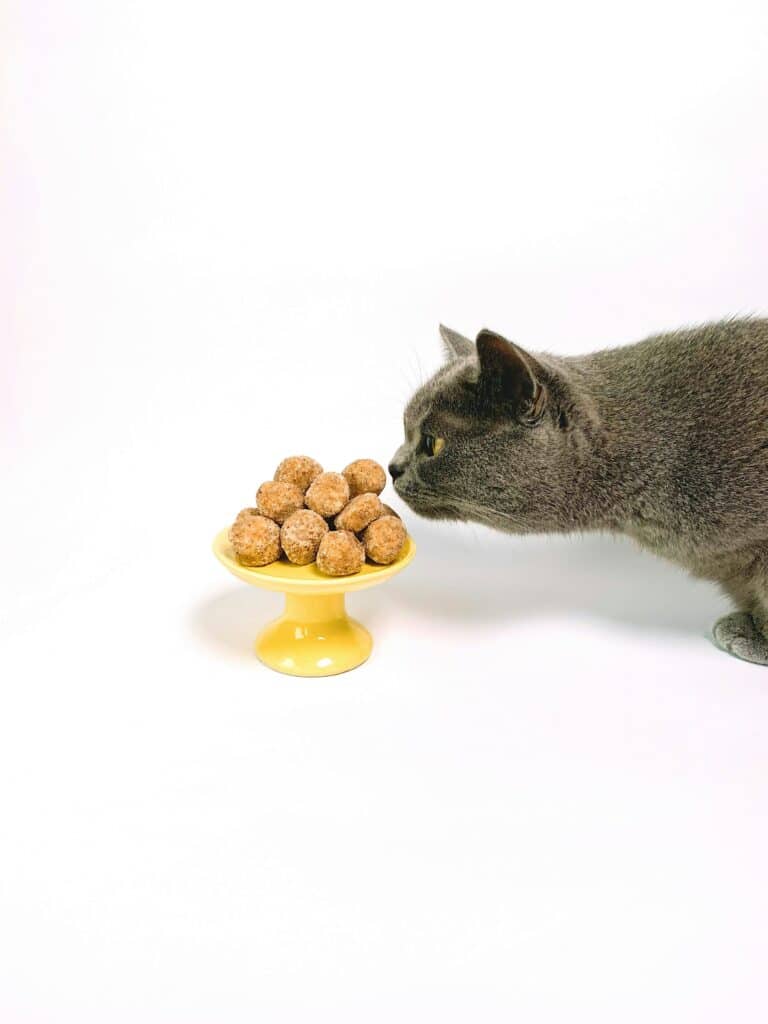Difference Between Male Cat Nipples and Pregnant Cat Nipples: A Guide for Cat Owners
There’s a lot to learn when it comes to understanding the feline mammary system, particularly the differences between male cat nipples and pregnant cat nipples. Cats, like most mammals, have mammary glands responsible for milk production, connected to nipples that serve as exit points for nursing. Male cats also have nipples as a remnant from embryonic development. In non-pregnant cats, nipples are typically small, flat, and match the cat’s fur or skin tone, unlike the pronounced, pink-hued nipples seen during pregnancy.
Knowing the subtle differences in appearance and behavior of male cat nipples versus pregnant cat nipples can provide valuable insights into your feline friend’s well-being. Regular veterinary checkups are crucial for maintaining overall health, and any significant changes in nipple appearance or behavior should warrant a visit to the veterinarian. By staying informed and proactive, cat owners can ensure their beloved companions receive the care they need to live long and healthy lives.
All About Cat Nipples
Basic Anatomy of Cat Nipples
About 98 percent of cats have 6 to 8 nipples, typically arranged in a row along their underside. These nipples may appear small, flat, and blend in with the surrounding fur or skin tone. In non-pregnant cats, the nipples are often subtle, resembling tiny bumps compared to the more pronounced and pinkish nipples seen in pregnant cats. Male cats also possess nipples, a residual feature from their embryonic development.
Functions of Cat Nipples
Nipples in cats serve the primary function of lactation, providing the exit points for milk during nursing. While non-pregnant cat nipples are typically small, flat, and discreet, they still play a vital role in the potential feeding of kittens. The presence of nipples in both male and female cats highlights their importance in mammalian anatomy, underscoring the evolutionary legacy of these structures in felines.
Nipple Count and Arrangement in Felines
The arrangement of nipples in cats, starting from the chest and extending towards the belly, is a characteristic feature seen in most individuals. The exact number and positioning of nipples can vary slightly from cat to cat, highlighting the diversity within feline anatomy. Understanding the typical nipple count and arrangement in cats can provide valuable insights into their overall health and reproductive capacity.
Nipple Changes In Pregnancy
Early Pregnancy Signs
The early stages of pregnancy in cats may not always present obvious signs, but changes in the nipples can provide a clue to what’s happening inside your feline friend’s body. During early pregnancy, you may notice subtle enlargement and a slight pink hue developing in the nipples. This is a result of hormonal changes preparing the mammary glands for milk production.
Nipple Changes in Mid to Late Pregnancy
Pregnancy progresses, the nipples of a pregnant cat undergo more noticeable transformations. In mid to late pregnancy, the nipples become significantly larger and more pronounced, taking on a more vibrant pink color. This is a clear indication that the cat’s body is preparing for the arrival of her kittens and the onset of lactation.
It is necessary to monitor these changes closely and seek professional advice if any abnormalities, such as excessive redness or discharge, occur.
Post-Pregnancy Nipple Transformations
After giving birth, a cat’s nipples may undergo further transformations. The sensitivity of the nipples may increase as the cat nurses her kittens, and you may notice the nipples becoming elongated and more prominent due to the constant suckling.
It is necessary to continue monitoring the nipples post-pregnancy to ensure they heal properly and return to their pre-pregnancy state.
Overview of Cat Nipples When Not Pregnant
Normal Nipple Appearance in Female Cats
Female cats typically have small, flat nipples that are often compared to tiny bumps or pimples in size. These nipples are usually not pink in color, blending in with the cat’s fur or skin tone. Cats generally have six to eight nipples arranged in a row along their underside, starting from the chest and extending towards the belly. It’s important to note that male cats also have nipples, although they are not involved in lactation.
Differences in Nipple Conditions Aside from Pregnancy
When observing your cat’s nipples, it’s crucial to pay attention to any significant changes in appearance or behavior. Sudden enlargement, redness, discharge, or irritation of the nipples may indicate underlying health issues that require veterinary attention. Other concerning signs include behavioral changes such as lethargy or loss of appetite. Regular veterinary checkups can help detect and address any potential problems related to the mammary glands or other body systems, ensuring your cat’s overall well-being.
Female cat nipples serve as vital structures, even when the cat is not pregnant. Understanding their normal appearance and being aware of abnormal changes can help cat owners intervene early if necessary, ensuring the health and comfort of their feline companions.
Male Cat Nipples vs. Female Cat Nipples
Comparative Anatomy
| Female Cat Nipples | Male Cat Nipples |
| Anatomy: Small, flat, and usually matching the fur or skin tone. | Anatomy: Similar in appearance to female nipples, often smaller and more subtle. |
Are Nipple Differences Noticeable?
With the subtle nature of male cat nipples compared to female cat nipples, the differences may not be readily noticeable to the untrained eye. Male cat nipples are typically smaller and less prominent, blending in with the surrounding fur or skin tone.
To further distinguish between male and female cat nipples, a closer inspection may be required. Female cat nipples may appear slightly larger and more pronounced, especially during pregnancy or lactation. Male cat nipples, although similar in structure, are usually less noticeable due to their smaller size and less protruding nature.
Hormonal Influences on Male Cat Nipples
Male cats, like females, can be influenced by hormones that may cause changes in their nipples. While male cat nipples are typically nonfunctional and serve no purpose, hormonal imbalances or medical conditions can sometimes lead to nipple enlargement or other abnormalities. It is crucial for cat owners to monitor any changes in their male cat’s nipples and seek veterinary attention if necessary.
Other Signs of Cat Pregnancy
Behavioral Changes
The behavior of a pregnant cat may also undergo noticeable changes. This can include increased affection towards their owner, nesting behavior where they seek out secluded spots to rest, or even heightened vocalization. Some pregnant cats may exhibit a decrease in activity levels or appetite, while others may become more protective or territorial.
Physical Changes Beyond Nipples
Physical changes in a pregnant cat go beyond just the nipples. As the pregnancy advances, you may notice a rounding or swelling of the abdomen, indicating the growing litter of kittens inside. Additionally, pregnant cats may experience weight gain and a shift in body shape as the pregnancy progresses.
Levels of the hormone progesterone also increase during pregnancy, leading to certain physical changes in the cat’s body, such as an enlargement of the mammary glands to prepare for milk production. These changes, when combined with behavioral and other physical signs, can help cat owners recognize and confirm a pregnancy in their furry companions.
Detecting Pregnancy in Early Stages
The Role of Nipples in Early Detection
To accurately detect pregnancy in cats, one must pay close attention to the changes in the nipples. During early pregnancy, a cat’s nipples may begin to enlarge, become more prominent, and exhibit a pink hue. This change is a result of the mammary glands preparing for milk production. Monitoring the nipples for these tell-tale signs can provide valuable insight into your cat’s reproductive status.
Combining Nipple Observation with Behavioral Cues
To further enhance your ability to detect early pregnancy in your cat, it’s necessary to combine nipple observation with behavioral cues. Pregnant cats may exhibit changes in behavior such as increased affection, nesting behavior, or a decrease in appetite. By observing these behavioral cues alongside nipple changes, you can more accurately determine if your cat is expecting.
Combining nipple observation with behavioral cues can significantly enhance your ability to detect early signs of pregnancy in your cat. Monitoring both physical changes and behavioral patterns can provide a comprehensive picture of your cat’s reproductive status, allowing for prompt and appropriate care.
When to Consult a Veterinarian
With any concerns regarding your cat’s nipples or potential pregnancy, it is crucial to consult a veterinarian promptly. Sudden enlargement or redness of the nipples, discharge from the nipples, or behavioral changes like lethargy may indicate underlying health issues that require professional evaluation. Early detection and intervention can help ensure the well-being of your cat and her potential litter.
The guidance of a veterinarian is invaluable when it comes to identifying and addressing any concerns related to your cat’s nipples or pregnancy. Early intervention can significantly impact the outcome of the pregnancy and the overall health of your feline companion.
Caring for a Pregnant Cat
Nutritional Needs and Diet Adjustments
To ensure the health and well-being of your pregnant cat, it is crucial to make necessary adjustments to her diet. A balanced diet rich in imperative nutrients is imperative for supporting her during this critical time. Increase her food intake gradually as pregnancy progresses, providing high-quality kitten food or a specially formulated diet for pregnant cats. Consult your veterinarian for personalized recommendations based on your cat’s specific needs.
Preparing for Kittening
One of the most crucial aspects of caring for a pregnant cat is preparing for the impending birth of her kittens. Create a comfortable, quiet space for her to nest and give birth, such as a cozy box lined with soft bedding. Keep the area clean and free from disturbances to ensure a stress-free environment for your cat. Familiarize yourself with the signs of labor, such as restlessness and nesting behavior, to be prepared for the arrival of the kittens.
To monitor your pregnant cat’s health and ensure a successful pregnancy, it is important to keep a close eye on her nipples and overall well-being. Regularly check her nipples for any signs of redness, discharge, or irritation, as these could indicate potential issues requiring veterinary attention. Additionally, monitor her overall health, including changes in behavior or appetite, to detect any abnormalities early on. Your veterinarian can provide guidance on monitoring your cat’s health and address any concerns promptly to ensure a safe and healthy pregnancy.
Misunderstandings and Myths about Cat Nipples
Male Cats and Nipple Prominence
All male cats have nipples, a biological remnant from their embryonic development. However, these nipples are often overlooked or mistaken for other skin features due to their subtle appearance. Unlike pregnant cats, male cat nipples do not undergo the same changes in size or coloration. It’s important for cat owners to be aware of this distinction to avoid misconceptions about their male cat’s nipples.
Spayed/Neutered Cats and Nipple Changes
Cats that have been spayed or neutered may experience changes in their nipples due to hormonal fluctuations. These changes can include variations in size, color, or texture. While these alterations are typically harmless, it’s imperative for pet owners to monitor their cat’s nipples for any unusual signs, such as redness, discharge, or irritation. Consulting a veterinarian can help determine if further investigation is needed.
About the nipple Changes in spayed or neutered cats can often be attributed to hormonal shifts rather than pregnancy. Maintaining regular veterinary checkups for your cat can help ensure any nipple changes are promptly addressed, promoting their overall well-being. By staying informed about the potential changes in your cat’s nipples, you can provide the necessary care and attention to keep them healthy.
Overestimating the Reliability of Nipple Observation
Misconceptions surrounding cat nipples can lead to overestimating the reliability of nipple observation as a definitive indicator of pregnancy. While changes in nipple appearance can occur during pregnancy, they can also be influenced by other factors such as hormonal fluctuations or health conditions. It’s crucial for cat owners to exercise caution and consult a veterinarian for accurate assessments of their cat’s reproductive status based on comprehensive examinations rather than solely relying on nipple observation.
Reliability Misinterpreting subtle changes in cat nipples can create unnecessary confusion and anxiety for cat owners. By dispelling common myths and misconceptions surrounding cat nipples, owners can make informed decisions regarding their cat’s reproductive health and overall well-being.
FAQs on Cat Nipples and Pregnancy
Common Questions About Cat Nipples
FAQs: Once again, cat owners may have questions about their feline companions’ nipples, especially when it comes to pregnancy. It’s common to wonder about the appearance, number, and behavior of cat nipples, as well as what changes to look out for. Understanding the normal characteristics of non-pregnant cat nipples can help differentiate them from those of a pregnant cat.
Addressing concerns on pregnancy and nipple changes in cats is vital for cat owners to ensure the health and well-being of their pets. By staying informed and observant, you can be better prepared to identify any potential issues and seek appropriate veterinary care.
Addressing Concerns on Pregnancy and Nipple Changes
Pregnancy: This is particularly crucial for owners to monitor during pregnancy, as significant changes in the appearance or behavior of a cat’s nipples can indicate underlying health issues. Sudden enlargement, redness, discharge, or irritation should be promptly addressed by a veterinarian to rule out any concerns.
When to Seek Professional Advice
Addressing: Concerning your cat’s health, it’s important to know when to seek professional advice. Any notable changes in your cat’s nipples, such as enlargement, redness, discharge, or behavioral changes, should prompt a visit to the vet. Regular checkups are vital for maintaining your cat’s overall well-being and catching any potential issues early on.
Conclusion
Presently, understanding the differences between male cat nipples and pregnant cat nipples is imperative for cat owners to monitor their feline companions’ health effectively. By recognizing the typical appearance of non-pregnant cat nipples, owners can identify any concerning changes and seek veterinary attention promptly. Additionally, spaying female cats can help reduce the risk of mammary tumors and other health issues, emphasizing the importance of regular checkups and preventative care.
As responsible cat guardians, staying informed about our pets’ bodily functions and behaviors is crucial for their overall well-being. By being vigilant and proactive in monitoring our cats’ nipple health, we can ensure they lead happy, healthy lives. Share your insights and experiences with cat nipples to foster a community of knowledge and support among cat owners.

